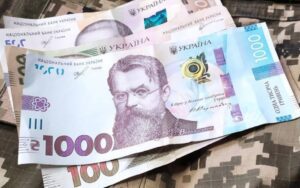
The Ministry of Agrarian Policy and Food of Ukraine issued the first four orders for grants for laying gardens and growing berries for a total of UAH 16.8 million, grants will be received by Bonelet LLC (Odessa region), Garden Pereyaslav LLC (Kyiv region), “Organic Zahid-group” LLC (Lvov region) and farm “Zhitni Pole” (Ivano-Frankivsk region).
As reported on the agency’s website on Tuesday, over the past month, Oschadbank has processed applications from 61 agricultural enterprises, of which 40 have been submitted for further consideration by the Ministry of Agrarian Policy: 33 for the development of horticulture, 7 for greenhouses. The working groups of the ministry have already worked out 23 applications and have agreed on the provision of a grant for the four above. The Ministry is considering 1 more application for a grant for the creation or development of a greenhouse facility and 16 applications for a garden.
“In the conditions of war, the government is laying a reliable platform to support the economy, which will give impetus to the preservation and creation of jobs, the payment of taxes to the state treasury. The agro-industrial complex has always been a driver for the development of the Ukrainian economy, and today, during the constant challenges for our country, this industry can is ready to become the basis for the development of small and medium-sized businesses in Ukraine,” the Ministry of Agrarian Policy quotes its head, Mykola Solsky.
According to him, grants for the development of greenhouses allow agricultural entrepreneurs to attract up to UAH 7 million in funding, and up to UAH 10 million for planting orchards. In general, the state will allocate UAH 16 billion for their financing.
The agency recalled that in June the Cabinet of Ministers of Ukraine launched a program of financial support for business under the government’s eWork program, through which entrepreneurs can receive government grants for training, creating and developing their own business. At the same time, the Ministry of Agrarian Policy oversees two areas related to the development of horticulture, growing berries, viticulture and greenhouses.
The agency clarified that it processes each application for funding within 10 business days after receiving a request from Oschadbank.
Under the terms of each program, the participant undertakes to operate for at least 5 years, pay taxes to the budget, and also create a certain number of jobs.

JSC “Ukrzaliznytsia” transported 10.302 million tons of cargo in July, which is 9.2% more than in June this year.
“Domestic transportation, exports and imports have grown. Only transit has not grown, because it is practically non-existent. The transportation of most of our key cargoes has increased: grain, ore, coal, ferrous metals, diesel, building materials, etc. Vehicle transportation has dipped , coke, scrap metal, salt and oil,” Alexander Kamyshin, head of the railway company, wrote on his Telegram channel on the evening of August 1.
According to the data he provided, in July 2022 UZ transported 542 thousand tons of oil and oil products (an increase of 12.2%), 2.033 million tons of ore raw materials (+3.2%), 1.462 million tons of grain (+7.2% ) and 6.266 million tons of other cargoes (+11.6%).
“Yes, the growth is slow. We are doing everything possible for the constant growth of freight traffic, primarily export cargo. I hope that the unblocking of seaports for grain will help us increase grain exports faster,” Kamyshin said.
In domestic traffic, UZ transported 6.2 million tons in July, which is 10.5% more than in June this year.
3.4 million tons of cargo were transported for export, which is 8.7% more than a month earlier.
UZ also transported 598.8 thousand tons of imported cargo in July, which is 4.5 more than in June 2022.

War risk insurance is the main condition for attracting investments to Ukraine, said the former US Ambassador to NATO and Special Representative of the US State Department for Ukraine in 2017-2019. Kurt Volker, at a meeting with members of the European Business Association (EBA) Warconomic Talks.
According to the EBA website, according to Volcker, covering war risks for investors should be a key issue in the coming months and years to attract investment in the Ukrainian economy. To do this, according to him, the governments of partner countries should direct a certain amount of resources to subsidize such insurance.
Volker noted that the war unleashed by Russia challenged the Ukrainian economy and became another factor that stirred up the global economic environment. Shutdown of business operations, interruption of logistics routes and supply chains, suspension of exports – all these factors put pressure on the economy and increase inflation. In this context, the financial support of the international community is very valuable, but Ukraine will need a lot of resources to recover. War is an emergency requiring extraordinary efforts, he said.
Answering the question whether American investors are ready to come to Ukraine, Volker noted that he sees significant support and interest in Ukraine, including from the private sector, but it is not yet completely clear what guarantees of security and return of investments, protection of interests investors. According to him, practical guidance is now needed on how foreign investors can bring money to Ukraine even in the conditions of war.
Passenger flow through the western border of Ukraine in June 2022, thousand (graphically)

Data: State Border Service
National bank of Ukraine’s official rates as of 02/08/22

Source: National Bank of UkraineSource: National Bank of Ukraine

The largest Ukrainian online retailer Rozetka is ready to provide its warehouses to companies for storing their goods, the retailer’s press service reported.
“Due to hostilities, many of our colleagues lost warehouses where they could safely store their goods, and were forced to urgently evacuate them and look for new storage areas. We are ready to help and provide our logistics centers,” said Rozetka co-founder Vladyslav Chechetkin.
He emphasized that the most modern safety standards and sanitary and hygienic norms are observed in the logistics centers.
“Our warehouses are equipped with powerful IT infrastructure and alternative energy sources. We will be happy to work together!” – added Chechetkin.
As noted in the release, previously only marketplace sellers could use this service. For now, the service is available at warehouses in Kyiv and Lviv. The term of storage of goods is not limited.
Rozetka was founded in 2005 in Kyiv by Vladyslav and Iryna Chechetkin as an online electronics and household appliances store. In the following years, the company transformed into a multi-category online marketplace. As of August, 242 Rozetka points are operating in 71 settlements of Ukraine. The company opened stores in the de-occupied territories of Kyiv region, in particular, in Buche and Irpen